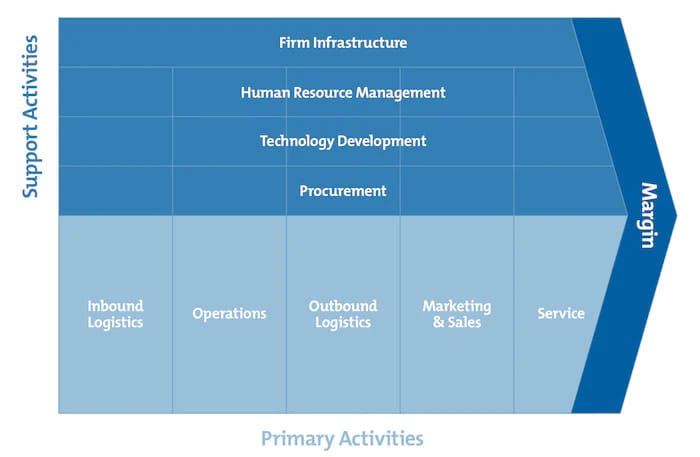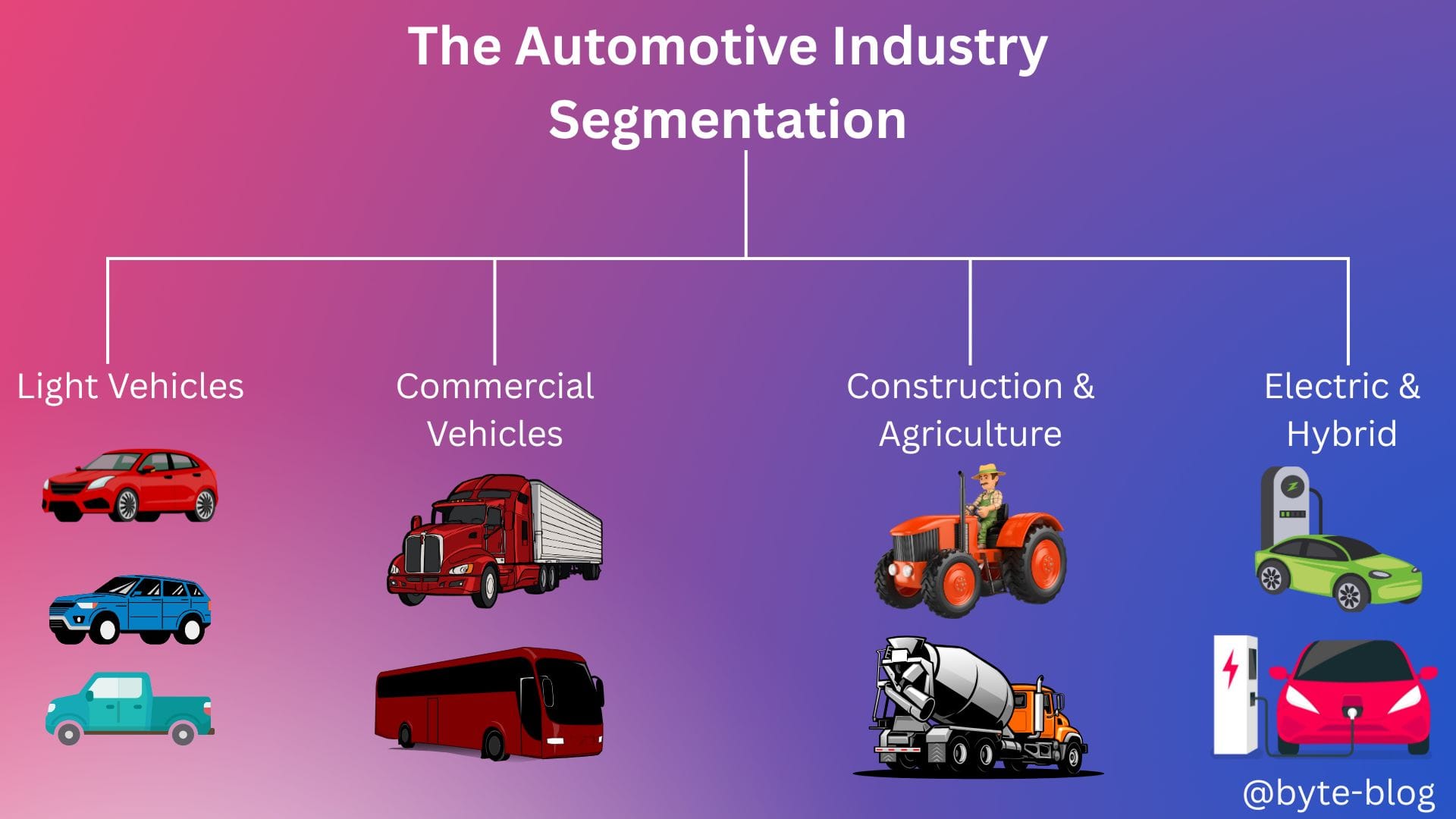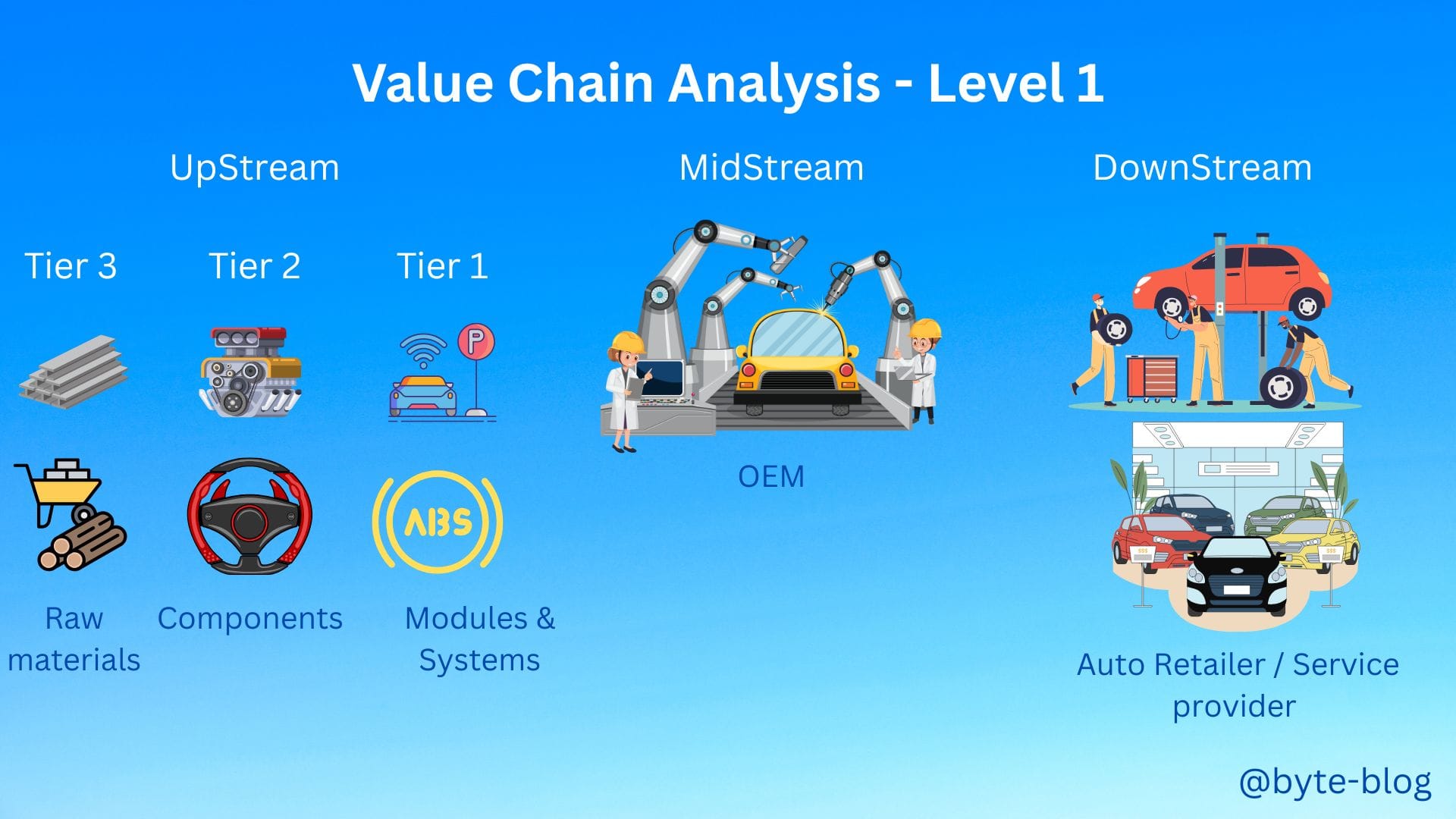Strategy Byte - Week 49 Automotive Industry Analysis

Table of Contents
- Recap
- Our First Car
- The Automotive Industry
- Industry Segmentation
- Value Chain Analysis - Level 1
- Value Chain Analysis - Level 2
Recap
During week 48, we answered the question - Why Industry Analysis? Why is it required & important as part of strategy?
The main reasons are :
- Understanding a company's direct & indirect competitors will provide data on their placement vis-a-vis their competitors
- It reveals key characteristics & constraints about the industry
- It helps in providing baseline for analyzing competitors (e.g., product quality, pricing etc)
- It helps position the company's products keeping in mind it's competitive advantages
- Guard against disruptive forces
- Identify customer segments to serve
We then explore the term "Value Chain" which was defined by Michael Porter as
- A set of activities
- that a firm performs
- to deliver a valuable product or service to the market
It can be visualized as below:

Let us now get our hands dirty & analyze some industries. We will start with the Automotive Industry & the product - The Automobile.
Our First Car

The Automotive industry is the one of the oldest industries & reflects milestones for many of us - like who doesn't remember their first car. Then as we move forward in life, we upgrade our cars to better models or another type entirely - like SUVs, sports cars, luxury vehicles etc.
Hence, it holds a special place in all our hearts as we spend quite a lot of time inside our vehicles either for commuting to office or going out with family & friends.


The Automotive Industry
Let us start with the product - An Automobile. No one goes & buys a car like we buy groceries. We spend days, weeks or even months doing research on automobile models, type, services, functionalities, after service etc. For our industry analysis, let us use the template discussed last week with the below questions in mind :
- What is the automotive industry? How is it segmented?
- How is the value chain structured in the automotive industry?
- Who are the players in the value chain of the automotive industry?
- How does each player contribute to the value chain?
- How is each player positioned vis-a-vis other competitors
- How is the automotive industry segmented or what are the important customer segments?
- What are the regulations governing the automotive industry?
- What is the unit economics of the industry?
- What are the new developments or disruptive forces in the automotive industry?
Let us explore each of the above :
Industry Segmentation
The Automotive industry consists of different organizations & companies involved in various stages of manufacturing an automobile. There are two types of companies in the automobile industry :
- Car Manufacturers &
- Car Parts Manufacturers
The above categorization is self-explanatory. There are various methodologies used to segment the industry like consumer - based segmentation, vehicle type based, Geographic etc. We will focus on the vehicle type based segmentation as below :
- Light Vehicles - Includes passenger cars, SUVs, minivans, pick up trucks etc.
- Commercial Vehicles -Includes coaches, trailers, buses etc
- Construction & Agriculture - Includes earth movers & construction equipment trucks
- Electric Vehicles & Hybrids
Representing the above visually :

With the above broad understanding of the industry & segmentation, let us now explore the Value Chain.
Value Chain Analysis - Level 1
The value chain covers all the activities starting from conception of the product (automobile) till the final delivery to the customer with each activity adding value at different stages.
As with all industries, it starts with the procurement of raw materials & goes through the value chain where the final product is ready for sale to the customer.
Let us start the Value chain analysis at a higher level (Level 1) before we dive deep into the individual levels (Level 2). Research categorizes the value chain into three primary segments (Source : here)
- Upstream Segment
- Midstream Segment
- Downstream Segment
Let us understand each of the above :
Upstream Segment
This segment includes the
- Raw material suppliers (Tier 3) - Includes suppliers for basic raw materials such as steel, aluminium, fabric, glass etc. E.g., steel suppliers like Arcelor Mittal, rubber suppliers for tires etc.
- Component Manufacturers (Tier 2) - Manufacturers of semi-finished components or sub-assemblies using raw materials from Tier-3. E.g., fasteners, small mechanical parts, wiring harnesses etc, companies producing springs, bolts, electrical connectors etc.
- Systems Suppliers (Tier 1) - These suppliers deliver complex systems or major components directly to manufacturers, such as engines, transmissions, braking systems etc. E.g., Bosch delivers automotive electrical systems, Continental for Tyres & safety systems.
The flow is that raw materials from Tier 3 are processed by Tier 2 companies into components, which are then assembled by Tier 1 companies into major systems to be delivered to the manufacturers (OEMs).
Midstream Segment
This segment is dominated by the Original Equipment Manufacturers (OEMs) who design, manufacture & assemble vehicles
Downstream Segment
These comprises dealership networks & after-sales services
The key point to understand here is that the automotive industry just does not consist of the names we know like Toyota, Honda etc. They are just one part of the value chain under the Midstream segment.
Historically, the automotive industry was vertically integrated. especially during it's formative years in the early 20th century. Over time, as the industry matured. & more functionalities were added to vehicles, the benefits of vertical integrated approach diminished & the industry shifted to modular value chain, with specialized suppliers providing the vehicle manufacturers with components & sub-assemblies. This assumed additional importance as the speed of market & technological changes increased drastically & still continues to this day. (Source : here)
Let us represent the above visually :

Value Chain Analysis - Level 2
Let us now dig deeper to understand the different stages in the manufacture, distribution & post sales services of an automobile. The different stages are : (Source : Various reports)
Manufacturing
- Design & Engineering
- Prototyping
- Materials Procurement
- Manufacturing
- Quality Control (QC) & Testing
- Finalization
Distribution
- Distribution & Logistics
- Sales & Marketing
Post Sales
- Post - Sales Services
- After market services
- End-of-life management